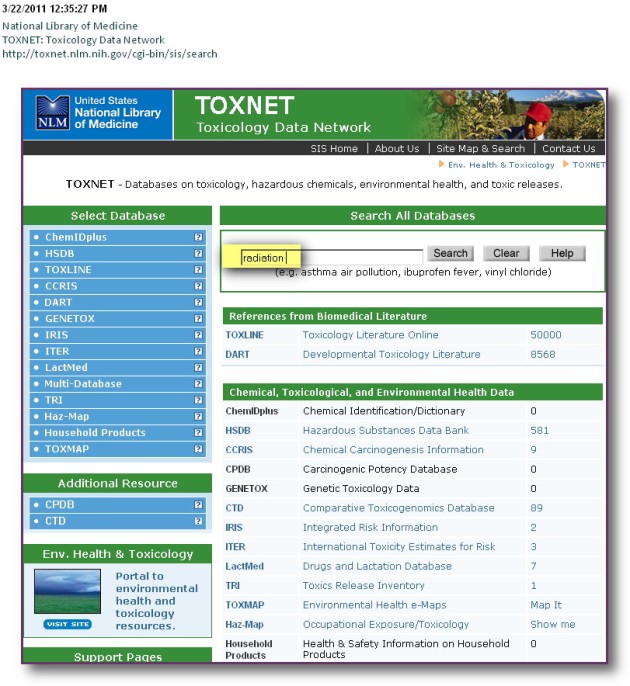 Image Source: International Tsunami Information Center – All rights reserved – copyright 2011
Image Source: International Tsunami Information Center – All rights reserved – copyright 2011
Life-changing events continue hard for the citizens of Japan, as the world watches them cope with multiple environmental disasters after surviving a 9.0 magnitude earthquake (a Big One) that hit near the northeast coast of the island near Honshu on Friday, Mar 11 2011. An eyewitness filmed this video clip which illustrates with utter clarity the frightening speed and power with which the ocean wave destroyed portions of Miyako City (footage from BBC website, dated Mar 17 2011). The latest death toll shows that 10,000 perished on that day, another 12,000 are still unaccounted for ten days later.
For the estimated 500,000 survivors, the basics of human requirements are being met, but supplies are scarce. Many are living in shelters. It will take months to clean up the rubble, and years to restore the damage to the infrastructure. As those who lost loved ones are required to re-define their “new normal”, psychological and counseling services will be in demand.
The challenges facing officials in the Japanese government in the aftermath of the quake and tsunami started out complex and have only grown more so over last ten days. A different public health emergency for these agencies is to contain radioactive materials from being released by quake- and tsunami-damaged nuclear reactors at the Fukushima Daiichi nuclear power station (built in 1979), an event which has been described as one of the most serious civil nuclear accidents in history. Protection of humans from exposure to radiation is of course the immediate concern; downstream, scientists will have a large amounts of data to collect as they examine health effects from three separate catastrophes.
Below is a map illustrating the 20km exclusion zone (12.4-mile radius) surrounding the Fukushima power facility (from BBC, published Mar 21 2011):
 Image Source: BBC http://www.bbc.co.uk/news/world-asia-pacific-12802335 – All rights reserved – copyright 2011
Image Source: BBC http://www.bbc.co.uk/news/world-asia-pacific-12802335 – All rights reserved – copyright 2011
________________________________________
Following is a brief selection of sources for links to specific medical information and relief efforts taking place in Japan – mainly from websites outside of the country.*
 Image Source: Google Crisis Response: Japan 2011 – All rights reserved – copyright 2011
Image Source: Google Crisis Response: Japan 2011 – All rights reserved – copyright 2011
______________________________________
American Public Health Association (APHA) this month is providing online free access to their 2006 field handbook, Public Health Management of Disasters: The Pocket Guide (55-page PDF). Below is shown page 42and 43:
 Image Source: APHA Disaster Guide – All rights reserved – copyright 2011
Image Source: APHA Disaster Guide – All rights reserved – copyright 2011
__________________________________
National Library of Medicine (NLM ) produces many information resources for epidemiologists, clinicians and public health officials to use to deal with environmental disasters. Since the monies to fund these agencies is from public tax-dollars, everything on the sites from NLM is on open access, available to anyone in the world to use. How cool is that!
First, Toxicology Data Network (TOXNET), is a gateway site from which groups of individual database can be searched. Below is a sample search on the term “radiation“:

Image Source: NLM Toxnet – All rights reserved – copyright 2011
Another resource from NLM: Disaster Medicine & Public Health Literature, a practical and multi-purpose website. One example of what can be found here: A schematic describing Public Health Preparedness and Response Competency Map (Dec 2010), produced by Association of Schools of Public Health, one of the accrediting bodies for institutions offering MPH/DoctorPH degrees. Worth a look, at:
 Image Source: ASPH – All rights reserved – copyright 2011
Image Source: ASPH – All rights reserved – copyright 2011
Environmental Health & Toxicology is a wide-ranging portal from NLM. After clicking on the “health professionals” link… I found access to IUPAC (International Union of Pure & Applied Chemistry and Human Health Division) Glossary of Terms Used in Toxicology and went to a random letter (I) to take a look (below):
 Image Source: NLM: IUPAC Glossary – All rights reserved – copyright 2011
Image Source: NLM: IUPAC Glossary – All rights reserved – copyright 2011
Many other quality information resources are available from the NLM Specialized Information Services Division... too many to describe, free access for anyone.
_________________________________________
Lastly: This 6-minute instructional video called Tsunami Teacher describes how tsunamis form, how to recognize if one is likely to take place, and testimonials from those who have survived them. It is a basic tutorial.
An iconical, enduring image about a terrible subject: “Great Wave off Kanagawa“, a colored woodblock print by Japanese artist Katsushika Hokusai (1760-1849) is one print in a series produced between 1829 and 1833.
 Image source: Wikipedia – All rights reserved – copyright 2011
Image source: Wikipedia – All rights reserved – copyright 2011
.
* Thanks to librarians at the National Library of Medicine, who earlier this month posted some of these websites on the MED-LIB listserv, which started the idea for this post.
 MD-Consult
MD-Consult WSJ Health Blog
WSJ Health Blog













Pingback: Radiation Emergency Medical Management (REMM), a Great NLM Resource for Physicians « Laika's MedLibLog